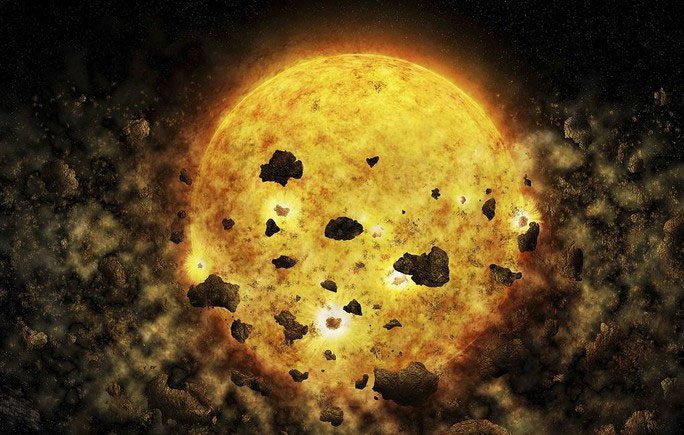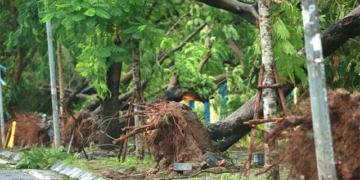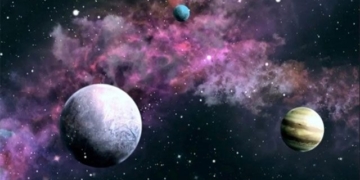According to the Russian space agency (Roscosmos), there are currently 1 million hazardous objects drifting freely around Earth, and this number is expected to increase rapidly in the coming years, posing a threat to spacecraft and space stations.
As reported by TASS, calculations from Roscosmos indicate that the number of orbital objects larger than 1 cm is projected to increase by 1.5 times within the next 6-7 years, heightening the risks associated with space access.
Roscosmos emphasizes that this situation highlights safety issues in space operations, as well as the necessity for developing traffic regulations in space and improving monitoring of areas near Earth.

A massive debris cloud, consisting of 1 million pieces larger than 1 cm, surrounds Earth – (Graphic image from NASA).
The space debris that Roscosmos refers to is commonly discussed in recent years under the term “space junk”, which consists of remnants of old satellites and spacecraft left in Earth’s orbit by space agencies worldwide.
According to Discovery Magazine, a previous calculation by the European Space Agency (ESA) revealed that, in addition to the relatively large debris mentioned above, there are also 130 million pieces smaller than 1 cm encircling the planet.
Numerous space debris cleanup proposals have been considered by the United States space agency (NASA) and ESA, including the development of spacecraft to collect debris and using lasers to destroy smaller pieces; however, it may take years before these plans come to fruition.
Meanwhile, several spacecraft have encountered accidents recently, with Roscosmos vessels being notable examples.
In December 2022, a Soyuz spacecraft carrying three Roscosmos-NASA astronauts was punctured while docked at the International Space Station (ISS), temporarily trapping the crew until Russia sent another vessel for replacement. The cause of the puncture was jointly concluded by Roscosmos and NASA to be due to a collision with space debris.
In February 2023, another Progress cargo spacecraft from Roscosmos suffered similar damage, forcing it to deorbit into Earth’s atmosphere for a safe “self-destruction,” with a small portion of it landing in the Pacific Ocean.
Just days later, in early March 2023, another Progress spacecraft from Russia docked at the ISS had to fire its thrusters to maneuver the station away from an incoming piece of hazardous debris. Fortunately, the maneuver was successful, and the ISS astronauts remained safe.


















































